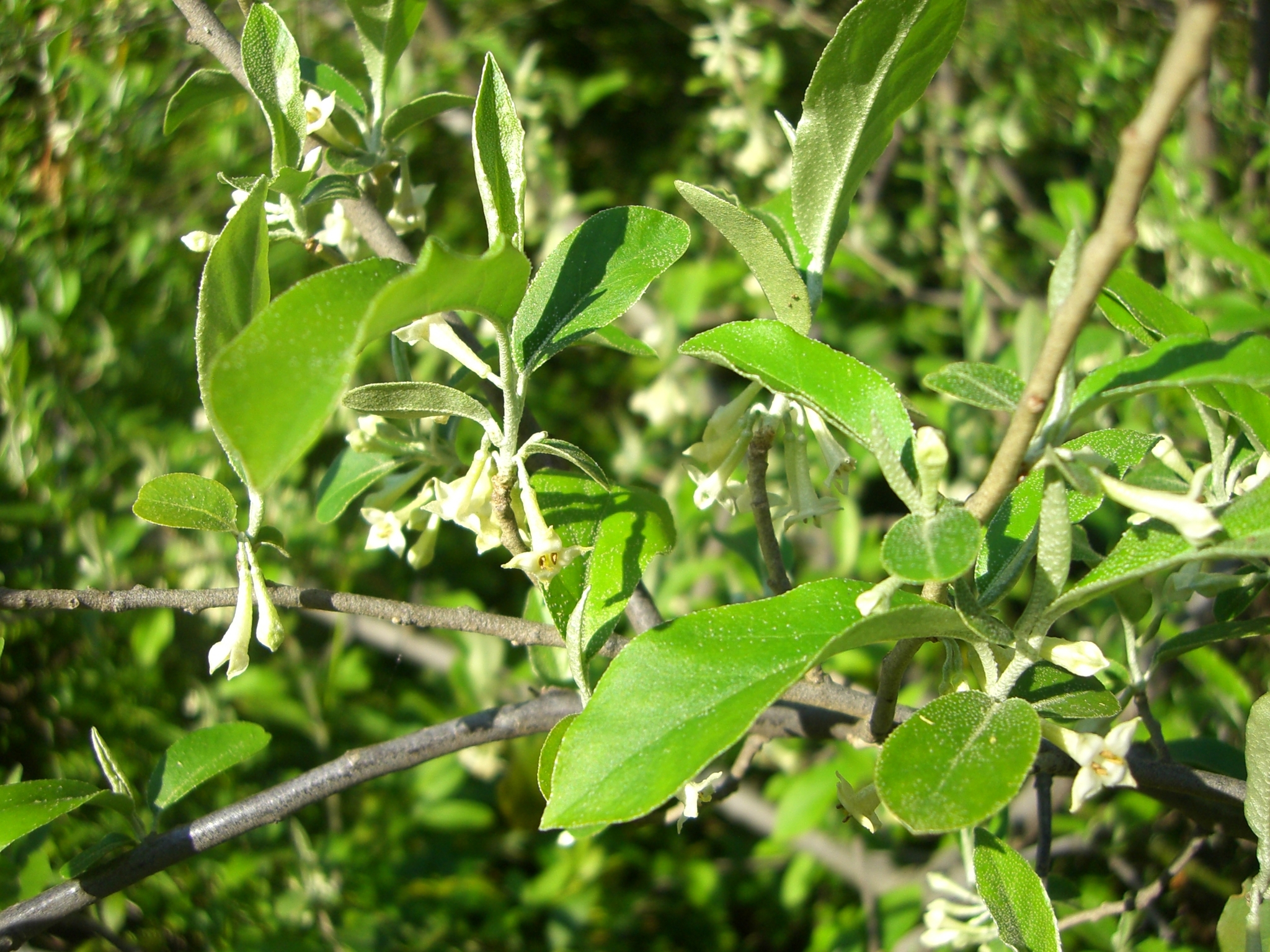
Shrubs or small trees, often spiny and with a covering of silver, gold or brown scales or starshaped hairs. Leaves alternate or whorled (opposite in Shepherdia), simple, entire, leathery; stipules absent. Flowers bisexual, regular, occasionally unisexual or polygamodioecious, solitary or in small clusters. Sepals mostly (2-)4(-8), edge to edge in bud, often petal-like. Petals absent. Stamens attached in throat, alternating with and once or twice the number of sepals. Lobed nectary disk in the throat. Ovary superior, 1 chamber with 1 ovule, 1 style. Fruit a berry- or drupe-like achene containing a single seed.
This family is often considered closely related to the Proteaceae, with reduced or absent petals and a single carpel.
Grown mostly as hedges and as border plants for the unusual silver- and gold-scaled foliage. Shepherdia argentea (Pursh.) Nuttall, Silver Buffalo Berry, from N America, is occasionally grown for its silvery leaves and red and yellow berries. Hippophae rhamnoides L., Sea Buckthorn, from Eurasia, is resistant to salt spray and is occasionally grown as a shrub or small tree for the unusual narrow grey leaves and yellow fruits.
3 genera and about 50 species from temperate and warm northern hemisphere, S Asia and Australia (1 species in N Australia), mostly from coastal and steppe regions.
Fruits of some species are edible, those of some Shepherdia species being used to make jellies, preserves or eaten dry, smoked or as a sauce. The wood of H. rhamnoides is sometimes used commercially.
Plants generally covered with silvery or golden scales.
Source: (2002). Elaeagnaceae. In: . Horticultural Flora of South-eastern Australia. Volume 3. Flowering plants. Dicotyledons. Part 2. The identification of garden and cultivated plants. University of New South Wales Press.
